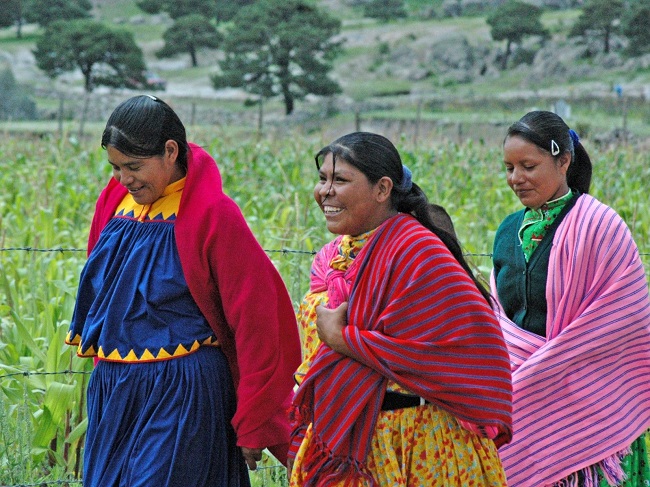Dynamic blends of indigenous and Spanish heritage enrich the history of the Mexico; yet, for hundreds of years, Mexican women were restrained by the strong patriarchal traditions of this heritage. A father’s authority was beyond question. The strict moral code established by the Church and prevailing family attitudes shielded daughters from the sins and corruptions of the world.

Ever notice the shell motif around windows and doors of older homes in San Miguel? That was a symbol for chastity and a way an Inquisition Era father to let the Inquisitor’s guards know his daughters were pure. There was no need to visit here!
The same goes for the Inquisition Era’s architecture. Even today, my Colonial style home has few windows facing the street and none at eye level. Instead, once inside, via the courtyard, I can see into every other room of the home. A father’s goal was to keep his eye on his daughters, not to ponder what the neighbors were doing.

Economic and social conditions governed a woman’s lifestyle, including her educational opportunities, activities and advantages or disadvantages. Because tradition, at every social level, decreed that a woman stay close to home serving her family, it did not suggest weakness on her part. Her strength held the family together when the man of the house left for battle or other pursuits. With or without him, she carried out the customs of her culture and passed them along to her daughters.
At first, when the Spanish arrived, marriages were mostly partnerships – easily formed and easily modified as witnessed in baptismal certificates listing children to one mother but various fathers. As the Church and State got more organized so did marriages.

Marriages were usually arranged, often for a social or economic reason. If a woman chose not to marry, or a marriage couldn’t be arranged, the convent offered protection. Upon leaving her father’s home, the husband or Church became master. Most women, if not content with this way of life accepted it as a way to retain their respectability and safety.

Folks tend to forget today that living a cloistered existence wasn’t necessarily a religious calling. If you were a wealthy Spanish woman who didn’t like men, or want children, or simply wanted to be well educated, the cloister was an attractive option. You could buy your living space/apartment in Bella Artes, bring along your servants to care for you and spend your days immersed in whatever interested you between attending masses.

Women that changed the course of lives in San Miguel via their convents include María Josefa Lina de la Canal y Hervas and Maria del Refugio Aguilar, both still having active orders in centro. Just a bit north is home of the soon to canonized La Conchita. Look no farther than a 200 peso note to view Sor Juana warning men not to underestimate the intelligence of women.

Typically women took no part in political affairs or events outside the home although a woman’s social class or wealth increased her sphere of influence. There were those who refused to comply with conditions ordered by their men or society as a whole.

Brave women fought for political freedom and raised their voices to improve lives of those less fortunate. For a few, their human rights convictions empowered them to act. Others were compelled to rise above personal tragedy.

You can visit museums in nearby Querétaro or Comonfort dedicated to women that changed the course of Mexico like Josefa Ortiz de Domínguez or Manuela Taboada. Another option is to visit local schools when doing plays for their namesake, like Leona Vicario.



For some women it was artistic expression that forced them from the home to a larger stage. San Miguel is lined with dedications to artists like Angela Peralta, Maria Felix, Sara Garcia, Dolores Del Rio and Maria Gerver.

For centuries voiceless women were obedient and uncomplaining. However, right from the start of the Spanish invasion there were women like the controversial, La Malinche. Also the less controversial, but more internationally popular, Catrinas and Maria dolls left their mark on today’s San Miguel and around the world.

Everyone in Mexico for more than a few minutes knows Mexican men tend to do what their mothers tell them to. That’s why the Virgin Mary is so important, making Mexico’s
history and culture more feminine and compassionate than you are going to find in other places. Couple all these versions of the Virgin with the numerous female saints, nuns, political activists and artists that all have contributed to Mexico’s power of the feminine!
by Joseph Toone
- TripAdvisor’s top tour guide in San Miguel de Allende with History and Culture Walking Tours and Joseph Toone Tours.
- Amazon’s best selling author of the San Miguel de Allende’s Secrets book series on making your adventures around town unique.
- Creator of the Maria Dolls coloring book helping indigenous doll makers.

